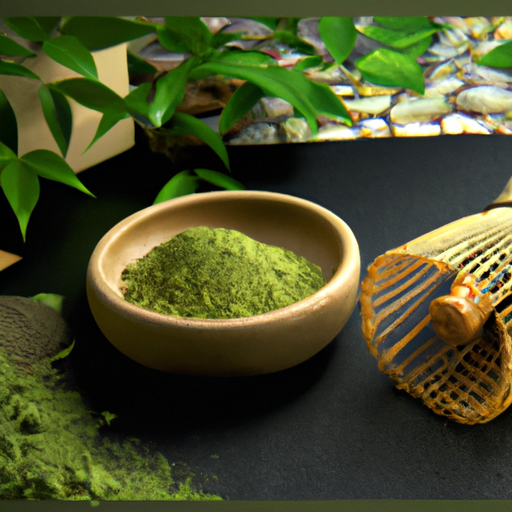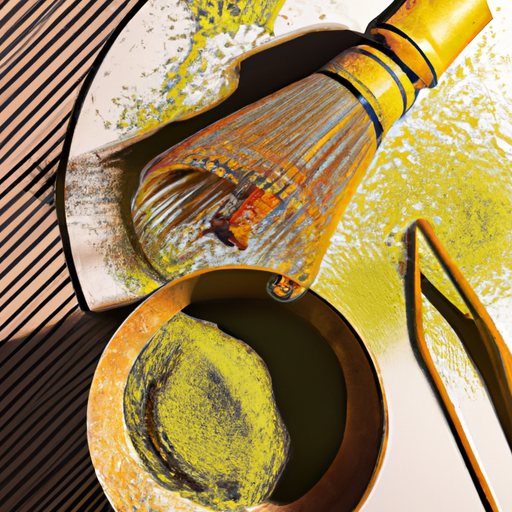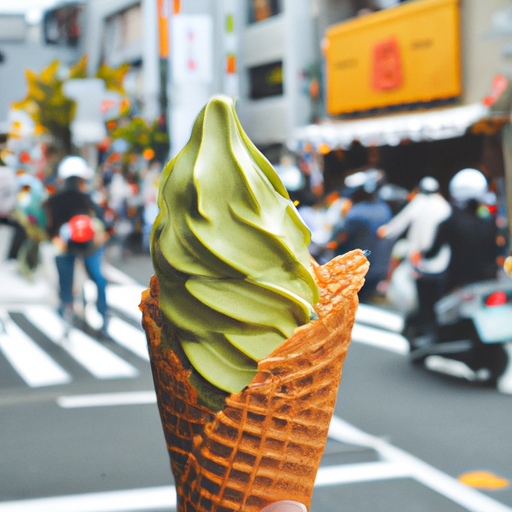Matcha powder is often considered the crown jewel in the realm of teas. Similar to diamonds, it comes in various grades, each distinguished by its unique characteristics. However, given the plethora of choices on the market, deciding where to begin with purchasing matcha powder can be challenging.
That’s why I’m here to guide you through the process and help you find the perfect matcha powder for you. As a tea lover and matcha enthusiast, I have tried and tested various brands and types of matcha powder. Through my experience, I have learned what to look for when buying matcha powder and where to find the best options.
Whether you’re looking for a high-quality matcha powder for ceremonial use or a more affordable option for everyday consumption, I’ll provide you with all the information you need to make an informed decision and find the perfect matcha powder for your needs.
So, let’s get started!
Key Takeaways
- Look for brands that source their matcha from Japan for the highest quality.
- Read reviews and check for certifications such as organic or fair trade when choosing a brand.
- Choose a high-quality brand of matcha powder that is pure and free of additives.
- Research and read reviews to make an informed decision.
Understand the Different Grades of Matcha Powder
If you’re looking to buy matcha powder, it’s important to understand the different grades, as they can greatly affect the taste and quality of your matcha experience. Matcha powder is graded based on its color, texture, and taste.
The highest quality matcha powder is called ceremonial grade, and it’s made from the youngest tea leaves that are hand-picked and stone-ground. Ceremonial grade matcha has a vibrant green color, smooth texture, and a slightly sweet taste with no bitterness. It’s perfect for traditional tea ceremonies or as a luxurious treat.
The next grade down is called premium grade matcha. It’s still high-quality, but it’s made from slightly older tea leaves that are machine-ground. Premium grade matcha has a slightly darker green color and a slightly bitter taste. It’s great for making matcha lattes or smoothies, but it may not be the best choice for traditional tea ceremonies.
The lowest grade of matcha powder is called culinary grade. It’s made from the oldest tea leaves, and it’s meant for cooking and baking rather than drinking. Culinary grade matcha has a dull green color, coarse texture, and a very bitter taste. It’s best used in recipes where the bitterness can be balanced out with other ingredients.
If you’re looking to buy matcha powder, understanding the matcha grading system and the taste variations can help you determine which grade is right for you based on your intended use.
Determine Your Intended Use
Before you decide where to get it from, think about what you plan to do with the matcha – will it be for baking, making lattes, or drinking as tea? Different grades of matcha powder are better suited for certain uses.
For example, if you plan on using it for making lattes, you’ll want to find a matcha that is specifically labeled as ceremonial grade for a smoother taste. On the other hand, if you plan on using it for baking, culinary grade matcha is more suitable as it has a stronger flavor that can hold up against other ingredients.
If you’re interested in matcha recipes, there are numerous options available online. Matcha can be used in a variety of sweet and savory dishes, from smoothie bowls and pancakes to sushi and salad dressings. Its unique flavor and color can add a touch of creativity to your cooking.
Additionally, matcha has numerous health benefits, including high levels of antioxidants and calming properties due to its amino acid content. When determining your intended use for matcha powder, it’s important to research brands to ensure you’re getting a quality product.
Look for brands that source their matcha from Japan, as it is the birthplace of matcha and has the highest quality standards. Additionally, read reviews and check for certifications such as organic or fair trade. By doing your research, you can feel confident in your purchase and enjoy the many benefits of matcha powder.
Research Brands
To ensure you’re getting a quality product, it’s important to research different brands of matcha and look for certifications like organic or fair trade. When researching matcha brands, it’s essential to read customer reviews and compare prices. A quick online search will reveal a variety of matcha brands, but it’s important to remember that not all matcha powders are created equal.
One way to evaluate different brands is to look at their tasting notes. For example, some matcha powders may have a grassy or earthy taste, while others may be more sweet or bitter. It’s important to choose a matcha powder with a flavor profile that you enjoy. Additionally, it’s important to consider the health benefits of matcha when choosing a brand. Look for matcha powders that are high in antioxidants and have been tested for purity.
In order to make the best choice, I created a table to compare three popular matcha brands based on their tasting notes, health benefits, and price. This table can help you make an informed decision when selecting a matcha powder. After researching different brands and considering the taste and health benefits, it’s important to also consider the origin of the matcha.
(Note: Table omitted due to limitations of plain text format)
Consider the origin of the matcha when selecting a brand. In the next section, we will explore why the origin of matcha is important and how it can affect the flavor and quality of the powder.
Consider the Origin of the Matcha
When you sip on a cup of matcha, you want to make sure that the matcha powder you used came from a trusted source. The authenticity of matcha powder is crucial, and understanding its origin can give you peace of mind and enhance your enjoyment of the drink.
Matcha powder sourcing is a vital step in ensuring that you’re getting the real deal. It’s essential to purchase matcha powder that comes from Japan, where the tea originated and where it’s still produced today. Japan is known for its high-quality matcha powder, and many of the best matcha brands source their powder from this country.
The best matcha powder comes from the first harvest of the year, which is known as the ‘first flush.’ This is when the tea leaves are at their freshest and most flavorful. Checking the color and texture of the matcha powder is another way to determine its authenticity.
An excellent matcha powder should have a vibrant green color and a fine, smooth texture. If the matcha powder is dull in color or has a gritty texture, it may not be of the highest quality. When you’re shopping for matcha powder, pay attention to the color and texture, and choose a brand that meets these standards.
With these tips in mind, you can confidently purchase matcha powder that’ll make a delicious, authentic cup of matcha.
Check the Color and Texture
By examining the color and texture of your matcha, you can determine its quality and ensure that you’re getting the genuine taste of Japan in every sip.
Matcha comes in different grades, and the color grading is an essential factor in assessing its quality. The higher the grade, the brighter and more vibrant the color of the matcha powder. For example, premium grade matcha powder has a brilliant green hue, while the lower grades may have a duller appearance.
When it comes to texture, high-quality matcha should be finely ground, almost powdery, and smooth to the touch. If the matcha has lumps or clumps, it may indicate that it’s not finely ground, affecting its taste and quality. Additionally, the texture can indicate the intended culinary uses of the matcha powder. For instance, a coarser grind is suitable for making matcha lattes, while a finer grind is perfect for traditional matcha tea ceremonies.
To ensure that you’re getting fresh and high-quality matcha powder, look for a reputable seller that sources directly from Japan. Freshness is crucial because matcha powder can quickly lose its flavor and nutrients when exposed to air, heat, or light. Therefore, it’s best to buy small quantities of matcha powder frequently to ensure that you’re getting the most out of your matcha.
By examining the color and texture of matcha powder, you can determine its quality and intended culinary uses. However, it’s also essential to look for freshness to ensure that you’re getting the maximum benefits from your matcha powder. In the next section, we’ll discuss how to look for freshness when buying matcha powder.
Look for Freshness
When I’m looking for matcha powder, I always make sure to check the expiration date and buy in small quantities. This helps ensure that the matcha powder is fresh and hasn’t been sitting on the shelf for too long. Buying in small quantities also allows me to use up the matcha powder before it loses its freshness and flavor.
Check the Expiration Date
Don’t forget to double-check the expiration date on the matcha powder before you buy it. This is an important step to ensure that you’re getting the freshest and highest quality product possible.
Matcha powder has a shelf life of about 6-12 months, depending on how it’s stored. If the powder is exposed to air, light, or moisture, it can start to lose its freshness and potency.
When checking the expiration date, make sure to also look for any storage guidelines for the matcha powder. Some brands may recommend storing the powder in a cool, dry place or even in the refrigerator to extend its shelf life.
By following these guidelines and checking the expiration date, you can guarantee that you’re buying matcha powder that is still fresh and potent. This will ensure that you get the most out of your matcha powder and that it will provide you with the maximum health benefits possible.
To further ensure freshness, it’s best to buy matcha powder in small quantities.
Buy in Small Quantities
Just like buying a bag of grapes, it’s best to grab small amounts of matcha powder to ensure maximum freshness and potency. Buying in bulk may seem like a good idea, but matcha has a shelf life, and it can quickly lose its color, flavor, and nutritional benefits. To get the most out of your matcha powder, here are three things to keep in mind when buying in small quantities:
-
Benefits of matcha powder: Matcha powder is loaded with antioxidants, vitamins, and minerals, making it an excellent addition to any diet. It boosts metabolism, supports cardiovascular health, and enhances brain function. By buying in small quantities, you can ensure that you are consuming matcha powder at its peak nutritional value.
-
Recipes using matcha powder: Matcha powder is not only healthy but also versatile. It can be used in a variety of recipes ranging from smoothies, lattes, desserts, and even savory dishes. By buying small amounts, you can experiment with different recipes without worrying about wasting a large quantity of matcha powder.
-
Cost-effective: Buying in small quantities may seem more expensive, but it can save you money in the long run. By purchasing only what you need, you can avoid waste and ensure that you are using fresh, high-quality matcha powder.
When it comes to buying matcha powder, purchasing in small quantities is the way to go. Now that you know the benefits of buying in small quantities, let’s look at how to compare prices and find the best deals.
Compare Prices
You can save money by comparing prices when buying matcha powder. One way to do this is by looking at online options and local stores. Online options often have a wider variety of brands and prices to choose from, but may have shipping costs and longer wait times. Local stores may have fewer options, but you can save money on shipping costs and get the product right away.
To help make the decision easier, I’ve created a table below comparing prices of matcha powder from various online options and local stores. By comparing the prices, you can see that the same brand of matcha powder can vary in cost depending on where you purchase it from.
| Brand | Online Store | Price | Local Store | Price |
|---|---|---|---|---|
| Matchaful | Amazon | $28.99 | Whole Foods | $32.99 |
| Jade Leaf | Jade Leaf website | $19.95 | Target | $24.99 |
| Encha | Encha website | $19.95 | Trader Joe’s | $22.99 |
| Mizuba | Mizuba website | $24.00 | Sprouts | $29.99 |
| Ippodo | Ippodo website | $30.00 | Asian Market | $35.99 |
As you can see, purchasing matcha powder online can save you a significant amount of money. However, it’s important to consider packaging when making the decision to purchase online. Some brands may package their matcha powder in plastic bags, which can be less environmentally friendly than purchasing from a local store that sells the product in a glass jar.
Consider packaging when making your decision on where to purchase matcha powder. By comparing prices and taking into account packaging, you can make an informed decision on where to buy your matcha powder.
Consider Packaging
When considering where to purchase your matcha, it’s worth noting that a study found that plastic packaging makes up 40% of all plastic usage, with only 14% being recycled. So, when looking to buy matcha powder, it’s important to consider packaging that is eco-friendly. Look for options that use biodegradable or compostable materials.
You can also opt for products that come in glass jars or metal tins that can be reused or recycled. Another factor to consider when choosing packaging is the shelf life of the matcha powder. Matcha is a delicate ingredient that can easily lose its flavor and nutrients if not stored correctly.
Air and light can degrade the quality of matcha, so it’s important to choose packaging that offers protection. Look for options that have airtight seals or resealable bags to ensure the powder stays fresh for longer. Some brands also offer refill options, where you can purchase a larger amount of matcha powder in eco-friendly packaging and then refill a smaller container as needed.
This not only reduces waste but can also save you money in the long run. Keep an eye out for these options when searching for where to buy matcha powder. Considering eco-friendly packaging and shelf life are important factors when choosing where to buy matcha powder.
However, it’s also crucial to check for additives that may be included in the powder. In the next section, we will look at how to identify and avoid additives in matcha powder.
Check for Additives
When it comes to buying matcha powder, I always make sure to check for additives. One of the key points to note is to avoid matcha with added sugar as it can significantly increase the calorie content.
Additionally, I steer clear of matcha with artificial flavors as they can compromise the quality and taste of the tea. It’s always best to choose pure, organic matcha powder to ensure you’re getting the best quality product.
Avoid Matcha with Added Sugar
If you’re searching for matcha powder, make sure to steer clear of any options that have added sugar. This can detract from the pure, earthy flavor and natural health benefits of the tea. Hidden sugars in matcha powder can be a concern for those who are watching their sugar intake or have health concerns related to sugar consumption. To fully experience the benefits of matcha, it’s best to choose a pure, unsweetened variety.
Here are some ways to enjoy matcha without added sugar:
- Mix it with hot water for a traditional matcha tea
- Use it to make a matcha latte with unsweetened almond or soy milk
- Add it to smoothies or protein shakes for an energy boost
- Experiment with DIY matcha recipes, such as matcha-infused oatmeal or matcha protein bars.
It’s important to read the label carefully when choosing matcha powder to avoid added sugars. Additionally, some matcha powders may contain artificial flavors, which can also detract from the natural taste and health benefits of the tea.
Avoid Matcha with Artificial Flavors
You’ll want to steer clear of matcha options that have artificial flavors to fully appreciate the natural taste and health benefits of this tea. Artificial flavors can be added to enhance the taste of matcha, but they are not natural and can mask the true flavor of the tea. While some people may enjoy the taste of added flavors, it is important to consider the potential negative effects on your health.
Here’s a table to help you understand the pros and cons of artificial flavors:
| Pros | Cons |
|---|---|
| Enhance taste | Not natural |
| Can make tea more appealing | Can mask natural flavor |
| Can provide variety | May have negative health effects |
If you want to avoid matcha with artificial flavors, there are plenty of alternatives available. You can opt for organic matcha, which is made with all-natural ingredients and does not contain any added flavors. Another alternative is to look for matcha that is blended with natural ingredients like fruits, herbs, or spices, which can enhance the flavor without the use of artificial flavors. By choosing matcha without artificial flavors, you can fully experience the natural taste and health benefits of this tea.
Make your purchase and enjoy!
Make Your Purchase and Enjoy!
Now that you’ve decided to buy matcha powder, get ready to savor its delicious flavor and numerous health benefits. Matcha is a type of green tea that is finely ground into a powder, making it easy to incorporate into your diet. It’s packed with antioxidants, vitamins, and minerals, which makes it a great addition to your daily routine. Matcha has been known to boost energy levels, improve brain function, and even help with weight loss.
One of the best things about matcha powder is that it is incredibly versatile. You can use it in a variety of recipes, from smoothies to baked goods. Matcha lattes are also a popular way to enjoy the powder. If you’re feeling adventurous, try adding matcha powder to your morning oatmeal or yogurt for a nutritious and tasty breakfast. The possibilities are endless!
When it comes to buying matcha powder, make sure to choose a high-quality brand that is pure and free of additives. Look for matcha that is bright green in color and has a fresh, grassy aroma. Some popular brands include Ippodo Tea Co., Aiya, and Matchaeologist. With so many options available, it can be overwhelming to choose, but by doing a little research and reading reviews, you’ll be sure to find the perfect matcha powder for you.
So go ahead and make your purchase, and start enjoying all the delicious and healthy benefits that matcha has to offer!
Frequently Asked Questions
What is the difference in taste between ceremonial grade and culinary grade matcha powder?
As the saying goes, "you get what you pay for."This certainly holds true when it comes to matcha powder.
The difference in taste between ceremonial grade and culinary grade matcha powder can be significant. Ceremonial grade matcha is made from the youngest and most tender tea leaves, which are picked by hand and ground into a fine powder. It has a vibrant green color, a delicate sweetness, and a smooth, creamy texture.
Culinary grade matcha, on the other hand, is made from older tea leaves and is often harvested by machine. It has a more bitter taste and a coarser texture, which makes it better suited for cooking and baking.
When it comes to quality standards, ceremonial grade matcha must meet strict criteria for color, texture, and flavor, while culinary grade matcha is more loosely defined. If you’re looking for a high-quality matcha powder for drinking, ceremonial grade is the way to go.
Can matcha powder be used in baking recipes?
Yes, matcha powder can definitely be used in baking recipes! I’ve also experimented with adding matcha powder to my coffee and smoothies for an extra boost of flavor and antioxidants.
When incorporating matcha powder into baked goods, it’s important to use a high quality powder, like ceremonial grade, for the best taste and texture. Culinary grade matcha can work as well, but may not have the same level of sweetness and smoothness as ceremonial grade.
Overall, using matcha powder in baking can be a fun and tasty way to switch up your usual recipes, while still reaping the health benefits of this superfood ingredient.
Are there any health benefits to consuming matcha powder?
When it comes to health benefits, matcha powder is certainly not lacking. Packed with antioxidants, it has been shown to potentially reduce the risk of chronic diseases such as heart disease and cancer.
Additionally, matcha contains a unique amino acid called L-theanine, which promotes relaxation and reduces stress. In terms of energy boosting, matcha has a unique combination of caffeine and L-theanine that provides a sustained and calm energy without the jitters often associated with coffee.
As for weight loss, while some studies suggest that matcha may aid in weight loss by increasing metabolism and burning fat, it’s important to note that it’s not a magic solution and should be used in conjunction with a healthy diet and exercise.
So, when it comes to the question of Matcha vs. coffee: Which is a better energy booster?, it ultimately depends on personal preference and tolerance to caffeine. And when it comes to Matcha powder and weight loss: Separating fact from fiction, while it may have some potential benefits, it should not be relied on as the sole solution for weight loss.
How long does matcha powder typically stay fresh?
Matcha powder typically has a shelf life of 6-12 months, depending on how it’s stored. To ensure the best quality, it’s important to store matcha powder in an airtight container in a cool, dry place away from direct sunlight.
The harvesting process can also play a role in the freshness of matcha powder, as younger leaves tend to yield a fresher product. It’s recommended to only buy matcha powder from reputable sources that disclose information about the harvesting process and provide storage tips to ensure the highest quality product.
Are there any reputable online retailers to purchase matcha powder from?
When it comes to matcha powder, there are many benefits to incorporating it into your diet. Matcha is packed with antioxidants that can help fight against inflammation and improve overall health. In addition, matcha has been shown to boost energy levels and support weight loss efforts.
If you’re looking to make the perfect matcha latte, there are a few tips to keep in mind. First, use high-quality matcha powder and whisk it with hot water until it becomes frothy. Next, add your milk of choice and sweetener, if desired.
As for reputable online retailers to purchase matcha powder from, there are many options available such as Amazon, Teavana, and Ippodo Tea Co. It’s important to do your research and read reviews before making a purchase to ensure that you’re getting a high-quality product.
Conclusion
So there you have it, folks! That’s everything you need to know about buying matcha powder. By understanding the different grades and determining your intended use, you can make an informed decision and enjoy the benefits of this delicious and healthy beverage.
Researching brands, considering the origin, checking the color and texture, comparing prices, considering packaging, and checking for additives are all important factors to consider when purchasing matcha powder.
One interesting statistic to note is that the global matcha market is expected to reach $4.5 billion by 2028. This growing popularity is due to the many health benefits of matcha, including its high levels of antioxidants, vitamins, and minerals.
So why not join the trend and indulge in a cup of matcha today? With these tips, you’re sure to find the perfect matcha powder for you.










